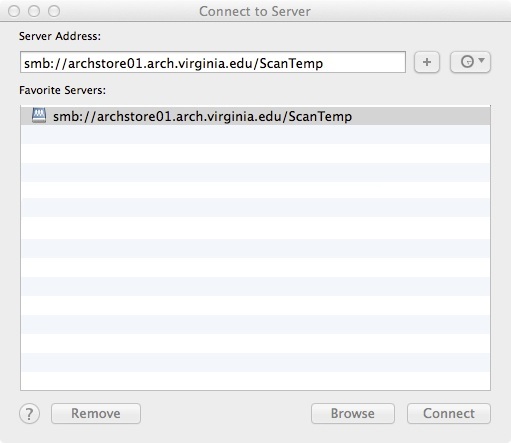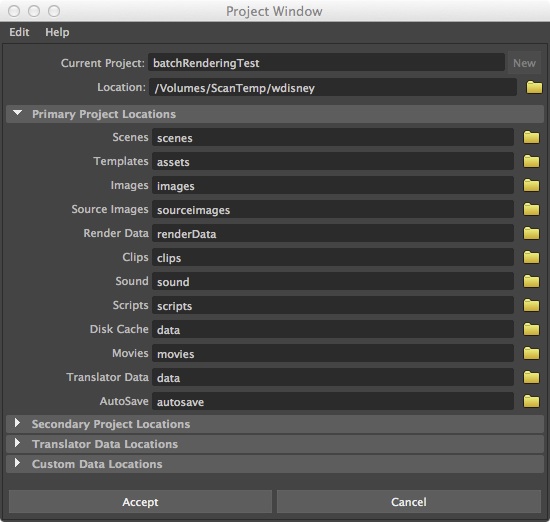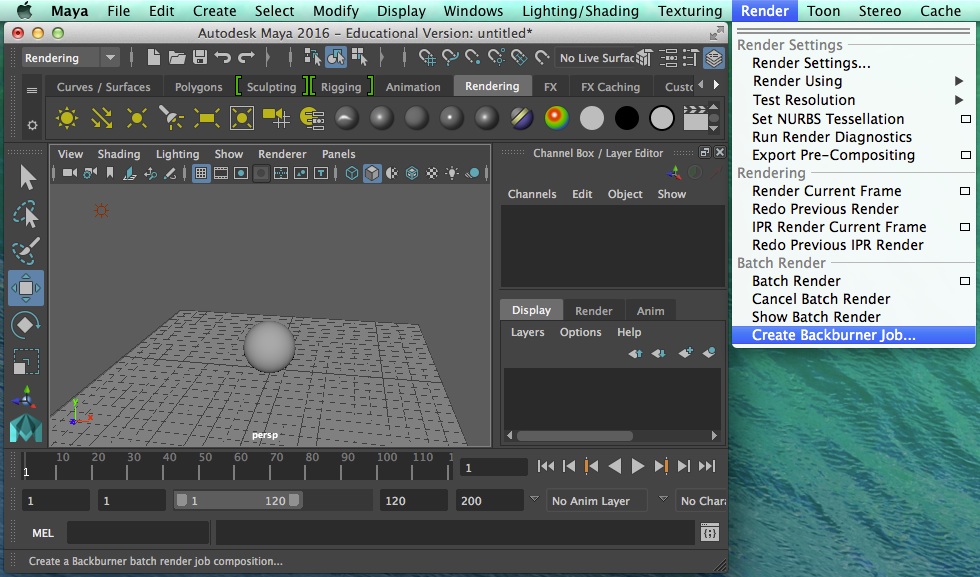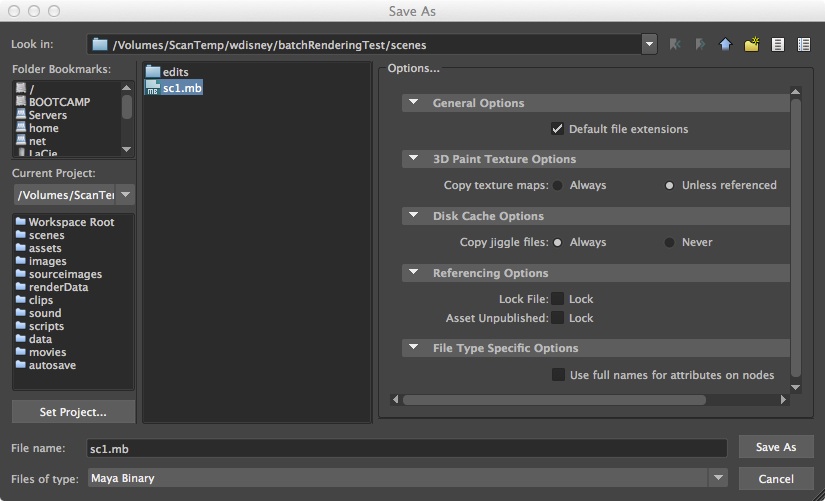
RENDER FARMING
Rendering farming, distributed rendering to remote computers, is possible in Maya for Mental Ray and Maya Software rendering options. Basic setup nstructions are typically posted on the School of Architecture web site web. Note that these instructions are currently being updated. The rendering is completed in batch processing mode such that once a job is submitted it is not necessary to stay logged in while it is being processed. The following steps illustrate a typical render farming sequence.
1. Create a folder on the School's "ScanTemp" typically with your name (e.g., wdisney).Typically "ScanTemp" is visible on any public computer with thie School of Architecture.
1a. On a private Mac on grounds or through VPN use the menu item "Go/Connect To Server":

1.b Similarly, on Windows use the "Run" command and enter
\\archstore01.arch.virginia.edu\ScanTemp
2. Within Maya, setup a project directly on "ScanTemp" under your folder (e.g,"wdisney/batchRenderingTest")

3. Create or open a pre-existing scene file and save it to the "scenes" subfolder of the project folder on "ScanTemp" similar to previous workshops.
4. Setup for batch rendering with either "Maya Software" or "Mental Ray" in the "Render Settings" tool similar to previous workshops.
5. Go to the "Rendering Module" in Maya and then go to the menu sequence "Render/Create Backburner Job ... ".

6. Within the next stage, you will be asked to save the scene one time. Save it to your project's scenes folder on scan temp.

7. The following backburner settings are typical.
7a. Create a "Job Name", such as "backBurnerJobforWaltDisney".
7b. Set the "Manager Name" to "renderfarm01.arch.virginia.edu" (the address of the render server).
7c. Set the "Server Name" to "maya2016"
7d. Set the "Renderer Path" to "C:/Program Files/Autodesk/Maya2016/bin/Render.exe"
7e. NOTE: The "Backburner Path", set by default, will be different on Windows and on the Mac and need not be modified.

The Mac version of the "Backburner Path" is shown above.
The Windows version "Backburner Path" is in the full setup PDF file.
8. Choose the "Submit Job" button, and look for the rendered frames in the images folder under your project Folder on ScanTemp. At this point it is no longer necessary to remain logged in for the backburner batch process to proceed.
9. Whe the images are rendered, copy them from ScanTemp to the local desktop and compile them within Quictime Pro as per the method of earlier workshops. Do not attempt to compile the images over the network due to a number of potential errors.
10. The full setup PDF file also illustrates how to send email to your self notifying when the backburner task is completed. In addition it describes how to monitor the status of the rendering process on a School of Architecture Windows computer.